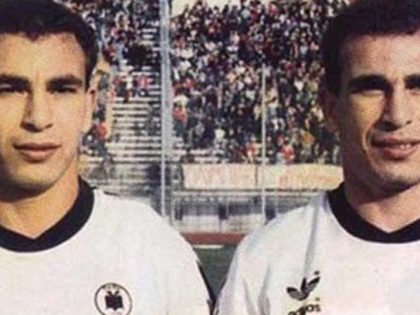The Naked Woman on Mandela Square
Her nudity wakes us up, either in protest or solidarity to the fact that everything is not okay in South Africa.

Cellphone photo.
On Monday, a woman walked towards the giant Mandela statue at Nelson Mandela square in Sandton, Johannesburg, and stripped naked until security guard came to remove her as demonstrated in the cellphone images that were captured and distributed on social media by bystanders. It is not clear who this woman is or why she did it but somebody on Twitter called her Braveheart and I must agree, there is something beautifully valiant in her statement. Some dim witted people on News 24 complained about the type of body she has, some have called it ”yuck” and that it would have been better to have a younger ”firmer” body instead. This type of thinking, not unlike some news reports that have insinuated that she is mentally unstable, is perhaps the type of thinking that Mystery Braveheart seeks to challenge about who we have become as a society.
A black African female body — something usually under duress in South Africa, constantly cleaning, carrying and wiping; the perpetual provider – caring, mothering, fathering, paying, praying; and always the recipient of various brands of a frightening South African masculinity – pursued, abused, sexualized and caressed in varying degrees of love and hate. This black African female body willfully walks to the towering figure of Nelson Mandela and disrobes. As visible as he is, presiding over an erect symbol of capital, she becomes visible.
In my eyes, the statement transcends her beautiful physical attributes, and becomes an embodiment of how many of us feel. In a world where nudity has become the smut that sells product and personality, hers is a pure human body, one that allows more people to see themselves in her shapely hips and breasts that look back at you. That we are unsure of the context of this act is in and of itself, pure.
As she leans in to place her head on the bronze knee of Mandela’s statue, I see a vulnerable woman in plain pain. She could have gone to any of the many places that are named after Mandela but she chose this one, a physical embodiment of South Africa’s neo-liberal agenda, one that prioritizes capital and not people, it is a building that represents all the wrong turns we’ve made to end up in a situation where 25% of South Africans are unemployed, where the majority are still poor and the poor are still black. It’s a building that represents our nation’s status as the dumping ground for Western Imperialism. An inference of the commodification of Mandela’s image, commoditized by the power that oppressed him, used to conciliate the South Africans into believing that nothing happened to them. She may be mentally unstable, would that be surprising? The real miracle in South Africa’s popular tale of reconciliation is how many of us have not reached a state of undress in pronouncement, no matter which side of the divide one falls. That she chose the powerful and now in his absence, changing image of Mandela is telling. The Mandela who placed the responsibility of morality into the hands of black South Africans, when immorality had ruled over them for 46 years, the Mandela who forgave the people but did not put on trial, the system that put him on trial, the Mandela who promised to not dislocate public life so that places like Sandton could continue being Sandton, unfortunately maintaining Alexandria as its unchanged appendage – that Mandela may be the one she is begging to, asking from and questioning.
She claims this space in response to the noise that pervades all available public space, especially in Sandton, all the noise that has facilitated the idea that nothing happened. What’s there to be angry about? What’s there to be sad about? Shop. Everything is okay. Whether it is art or not, her statement has allowed us to interrogate the state of unconsciousness that the country’s powerful are in when it comes to the needs of those whose power is exerted through their bodies, limited to their bodies or limited by their bodies. Her nudity wakes us up, either in protest or solidarity to the fact that everything is not okay.
Thank you Mystery Braveheart, if that’s what you were going for.



















